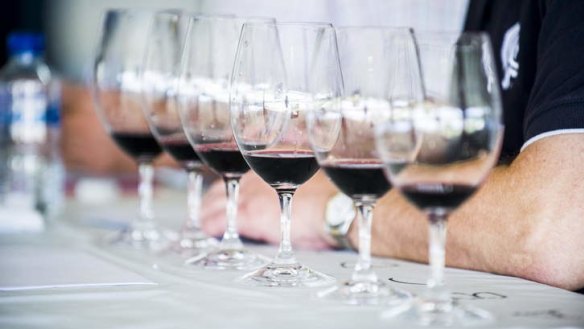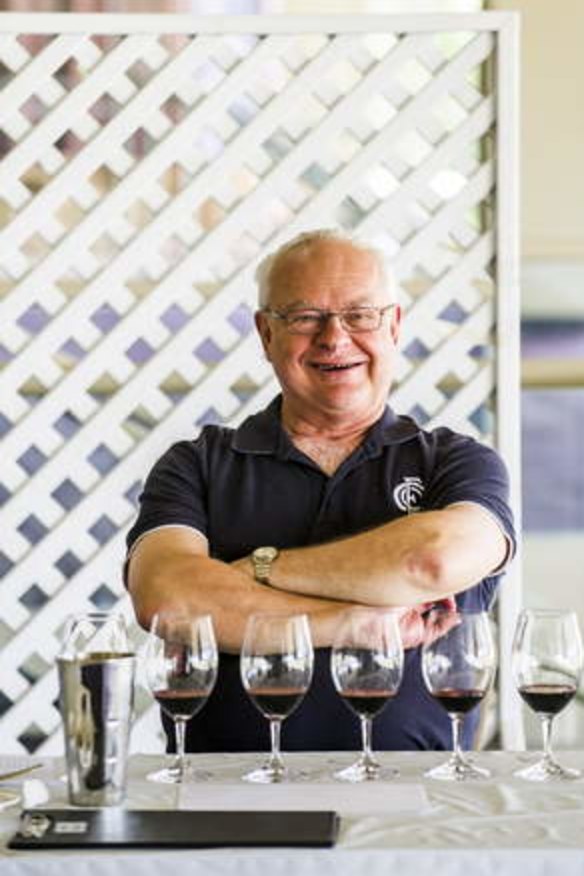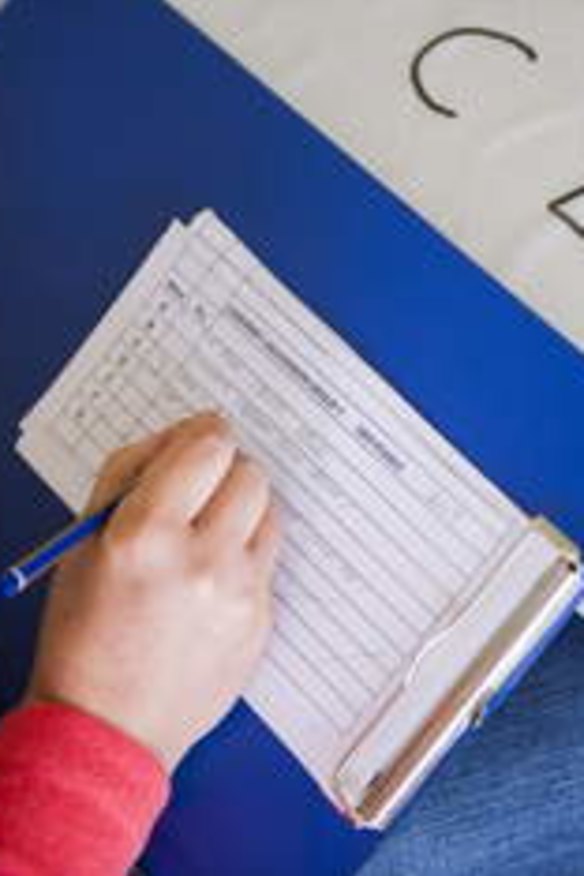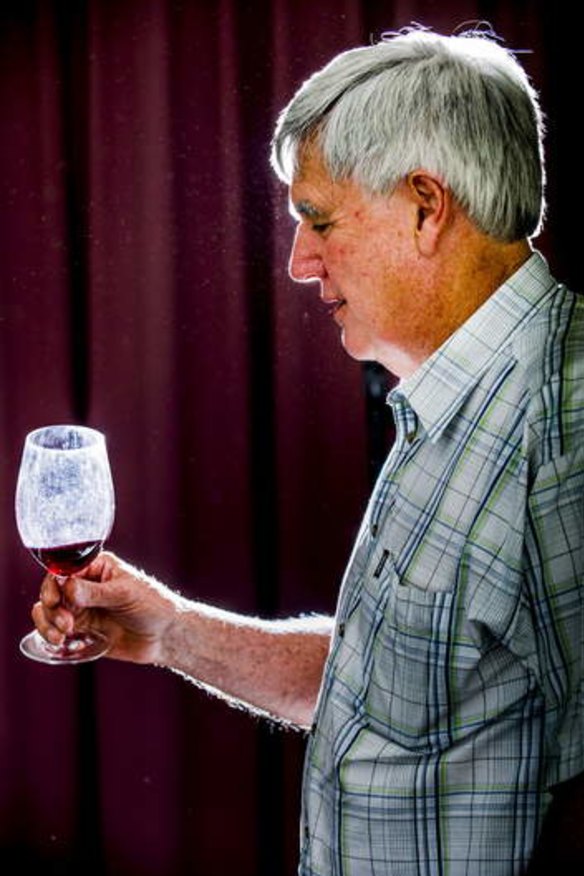Only the finest
Shiraz was the big surprise in a contest among gold medallists.

Depending on how you view wine shows, Canberra is blessed or burdened with a disproportionate number of nationally significant events.
These include the National Wine Show of Australia, the Winewise Small Vignerons Awards, the Winewise Championship, the Canberra International Riesling Challenge and the Canberra Regional Wine Show.
The national show, billed as the grand final of Australia's capital city shows, limits entries in many classes to medal winners from other shows it recognises.

Taking this concept a step further, our home-grown Winewise Championship, sets a gold-medal entry standard. Event organiser Lester Jesberg says only gold medallists in non-commercial classes of decent wine shows may enter. Acceptable events include Australia's capital-city and leading regional shows, as well as the international riesling challenge and the Winewise Small Vignerons awards, plus wines awarded gold-medal scores in the show-style tastings Winewise conducts throughout the year.
On establishing the championship in 2010, Jesberg commented, "While the National Show has now revised its eligibility criteria to recognise the Winewise Small Vigneron Awards and selected regional shows, many smaller producers still find the criteria hard to meet and confine their wines to the regional shows, thus missing out on valuable benchmarking across the national spectrum. This competition brings all the wines together for the benefit of both winemakers and consumers."
This year's event - judged at the Canberra racecourse - brought together about 300 wines from producers of all sizes.

Three days of tasting by Jesberg and Deb Pearce, of Winewise, and a panel of senior show judges, myself included, produced an exciting range of category winners from small, medium and large producers.
Tasmania alone of the wine-producing states missed out on a gong (the Canberra district also missed out). And Queensland's Granite Belt earned a rare moment of glory on the national stage. Symphony Hill Reserve Granite Belt Petit Verdot 2009 topped the "other red variety" category in a close taste-off against Rosemount Nursery Mataro 2011.
And in a rare achievement at a racecourse, a conventional form guide, albeit a regional-varietal one, would have predicted almost all of the winners. The best chardonnay came from Victoria's Mornington Peninsula; the best riesling from the Clare Valley; the best sauvignon from the Adelaide Hills; the best sauvignon blanc semillon from Margaret River; best viognier from the Eden Valley; the best sweet riesling from the Eden Valley; the best cabernet sauvignon from Coonawarra; the best cabernet merlot blend from Margaret River; the best classic Australian red blend from Coonawarra; the best pinot noir from the Adelaide Hills; the best fortified wine from Rutherglen.

A form guide might not have picked the successful wineries. But that's the beauty of masked judging: remove the biases and all that counts is what's in the glass.
However, some of the exceptions to conventional regional-varietal wisdom point to gaps in the ranks. For example, Centennial Vineyards Blanc de Blancs NV, wonderful wine that it is, isn't Australia's best sparkling wine, not by a long shot. A perennial problem in Australian wine shows is the dearth of really top sparklers winning the top awards.
And when it comes to emerging varieties such as lagrein and tempranillo, we're a long way short of knowing which regions perform best. The results, therefore, might be a pointer to the future, though it's too early to say yet.
To me, the biggest surprise of the show came with the success of a Bathurst shiraz. After a number of shiraz heats, Winburndale Bathurst Solitary Shiraz 2009 competed in the final against wines from Coonawarra, the Barossa Valley, the Swan Valley and Adelaide Hills.
Forty-eight shirazes were entered. I judged them, voting in the heats and the final for a plush and velvety wine that turned out to be Shaw and Smith Adelaide Hills 2009. However, the other judges disagreed, and the Winburndale shiraz (my second choice), edged into first place, on 34 points, ahead of Brands Laira Coonawarra Tall Ships Shiraz 2010, on 32.
This was a tight and high-quality competition, so there can be no caveats about the virtues of Winburndale. The lovely wine says Australia's versatile signature red has yet another home, and another expression, in the high country of the Great Dividing Range.
Shiraz is, along with riesling, the Canberra district's flagship wine, but only one was entered, Eden Road 2011, which looked light and simple in its group - a decent wine, but showing the shortcomings of the cold, wet 2011 vintage. We would hope to see more Canberra shiraz and higher rankings with a return to warmer, less challenging vintage wines entered.
Three Canberra district rieslings were entered, from the 2012 vintage - Clonakilla, Ravensworth and Four Winds. Clonakilla topped its group, then came second to Leo Buring Clare Valley Riesling 2012 in the taste-off of 2012 rieslings. The Buring wine went on to win the taste-off of all rieslings to win the riesling medallion. This was no surprise given the exceptional quality of Clare and Eden Valley rieslings in 2012.
Unlike other shows where any number of wines can win bronze, silver or gold medal wines, the Winewise Championship awards only one wine in each category. Each category winner receives a gold-plated medallion struck by the Australian Mint.
The wines are assessed in small groups - a maximum of seven. The judges know only the class definition - for example, "Shiraz group 1 vintages 2006-2009", and all they see is the glasses lined up in front of them on grids, marked A, B, C and so on.
Without any discussion, the judges rate each of the wines on a ballot paper - nine points for the favourite, six for the second favourite, then four, three, two and zero. Where there are fewer than seven wines, judges don't use the bottom scores. The winner of each group is the wine with the highest aggregate, though some weighting may be given to the number of first and second places each receives when the aggregates are close.
Jesberg, a former statistician, says the scoring system attempts to ensure that a wine can win only if it has at least one score of nine (or first place) from one of the judges. In practice, most the better wines received two or more first places. But in very high-quality groupings, ratings tended to be more dispersed.
Group winners move on to taste-offs, ultimately for the category winner. In the shiraz class, for example, we tasted eight groups of wines, with two mini taste-offs, before assessing the final five outstanding wines, any of which I'd be happy to have on the dinner table.
The honours list, then, includes household names such as Wynns, Leo Buring and Yalumba as well as small makers at the cutting edge of their craft.
>>Chris Shanahan is a wine and beer judge, former liquor retailer and freelance writer.
Championship medallion winners
■ Chardonnay: Paringa Estate Mornington Peninsula 2011
■ Riesling: Leo Buring Clare Valley Riesling 2012
■ Sauvignon blanc: Shaw and Smith Adelaide Hills 2012
■ Sauvignon blanc blend: Warner Glen Estate PBF Margaret River Sauvignon Blanc Semillon 2011
■ Semillon: Meerea Park Hunter Valley Terracotta 2006
■ Other white varietal: Yalumba the Virgilius Eden Valley Viognier 2010
■ Sweet white: Heggies Vineyard Eden Valley Botrytis Riesling 2011
■ Cabernet sauvignon: Brands Laira One Seven One Coonawarra 2010
■ Cabernet Bordeaux-style blend: Mandoon Margaret River Cabernet Merlot 2010
■ Classic Australian blend: Wynns Coonawarra Estate V and A Lane Coonawarra Cabernet Shiraz 2010
■ Grenache or blend: Rosemount Estate McLaren Vale GSM (grenache shiraz mourvedre) 2011
■ Italian red variety: Geoff Hardy Hand Crafted Limestone Coast Lagrein 2010
■ Other red blend: Wynns Coonawarra Estate Cabernet Shiraz Merlot 2010
■ Other red varietal: Symphony Hill Reserve Granite Belt Petit Verdot 2009
■ Pinot noir: Tim Knappstein Riposte the Sabre Adelaide Hills 2010
■ Shiraz: Winburndale Bathurst Solitary 2009
■ Tempranillo: Centennial Vineyards Reserve Southern Highlands 2011
■ Fortified wine: Morris Rutherglen Rare Liqueur Muscat
■ Sparkling white: Centennial Blanc de Blancs non-vintage
■ Sparkling red: Quelltaler Watervale Sparkling Shiraz non-vintage